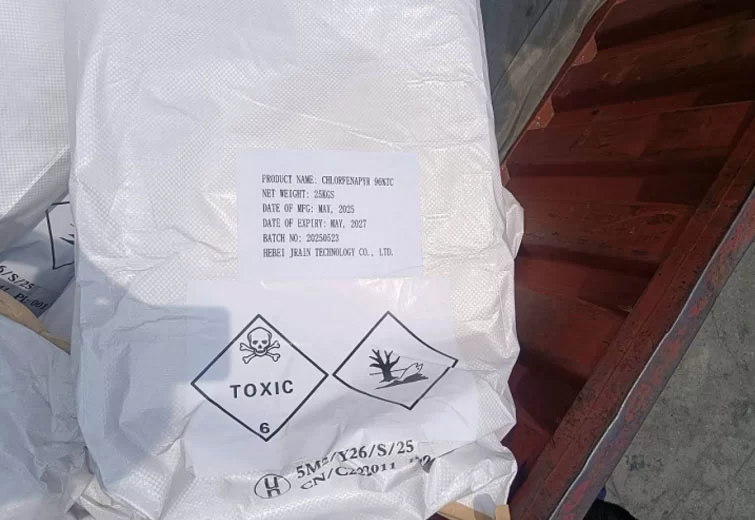
CHLORFENAPYR
1.Method of application: Young larval stage or insect population density is low when every acre with 10% to remove the suspension agent 30 ml or 30% armite nitrile concentrate 30 ml/acre, insect age is high or insect population density per acre with 40-50 ml, add water spray.Spray up to 2 times per crop, about 10 days apart
2. Precautions: (1) only two times per crop is allowed to avoid drug resistance;The safe interval for cruciferous vegetables is tentatively set at 14 days and should be used with caution in cucumber, lettuce, tobacco, and melon vegetables.
(2) this product is toxic to fish, so it is not allowed to sprinkle the liquid directly into water and water source.
Package: 25kg/bag or according to the customer’s request.
Customerized packing label
FAO standard
Professional registration GLP,ICAMA,LOA etc.
Chlorfenapyr Customer Reviews
Chlorfenapyr FAQs
-
80%High PurityEnsure the reliability of each product.
-
58%Fast-Acting FormulaQuickly provide visible effects
-
What pests does Chlorfenapyr control?
What pests does Chlorfenapyr control?
Chlorfenapyr is effective against mites, thrips, and resistant strains of caterpillars and whiteflies. It performs particularly well in IPM programs for vegetables, cotton, and ornamentals where conventional insecticides have failed.
-
How does its unique mode of action work?
How does its unique mode of action work?
As a pyrrole compound (Group 13), it disrupts mitochondrial function by uncoupling oxidative phosphorylation. Insects stop feeding within hours but may take 2-4 days to die, making it an excellent anti-feeding agent.
-
How does temperature affect performance?
How does temperature affect performance?
Activity increases with temperature, making it particularly effective in warm conditions (>20°C). Avoid applications during cold spells (<15°C) when pest metabolism is reduced.
-
What are the safety considerations?
What are the safety considerations?
Moderately toxic to mammals - wear full PPE during handling. It's highly toxic to aquatic life; maintain buffer zones near water bodies. Reentry interval is typically 24-48 hours.
-
How long does residual control last?
How long does residual control last?
Residual activity persists 10-21 days depending on application rate and environmental conditions. The slow action provides extended control of emerging pest populations.




